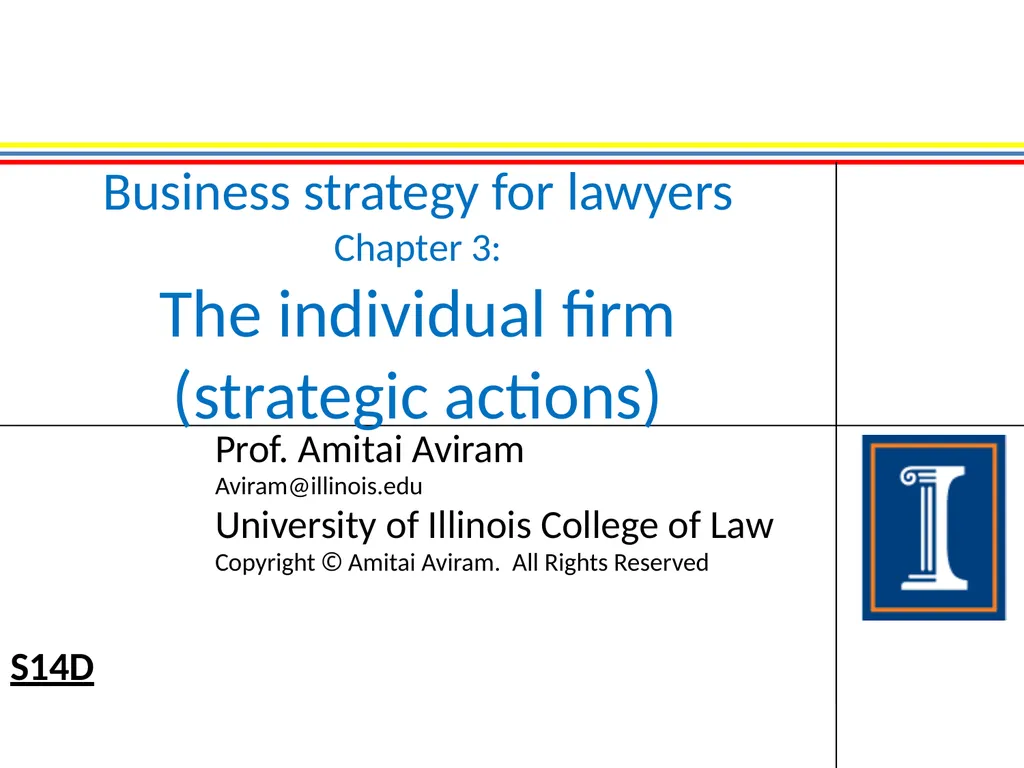Business strategy for lawyers Chapter 3: The
Author : natalia-silvester | Published Date : 2025-05-16
Description: Business strategy for lawyers Chapter 3 The individual firm strategic actions Prof Amitai Aviram Aviramillinoisedu University of Illinois College of Law Copyright Amitai Aviram All Rights Reserved S14D The individual firm
Presentation Embed Code
Download Presentation
Download
Presentation The PPT/PDF document
"Business strategy for lawyers Chapter 3: The" is the property of its rightful owner.
Permission is granted to download and print the materials on this website for personal, non-commercial use only,
and to display it on your personal computer provided you do not modify the materials and that you retain all
copyright notices contained in the materials. By downloading content from our website, you accept the terms of
this agreement.
Transcript:Business strategy for lawyers Chapter 3: The:
Business strategy for lawyers Chapter 3: The individual firm (strategic actions) Prof. Amitai Aviram Aviram@illinois.edu University of Illinois College of Law Copyright © Amitai Aviram. All Rights Reserved S14D The individual firm (strategic actions) Overview of Chapter 3 Strategic traits Strategic competences Strategic rigidities Reform (modifying strategic traits) From strategic traits to strategic actions Differentiation Coordination Confrontation Review (integrating the course’s components) © Amitai Aviram. All rights reserved. 2 Strategic traits Moving beyond environment… Fighting over a slice of the Value Pool pie Environment determines the portion of the VP that is allocated to market participants (firm + rivals) Strategic actions increase firm’s portion of VP by improving the environment for the firm If rivals could employ the same strategic actions, firms would offset each other Therefore, strategic actions rely on firm’s strategic traits, which rivals don’t have 3 © Amitai Aviram. All rights reserved. Strategic traits What are strategic traits? A strategic trait has two aspects: Positive aspect: strategic competence Often called “core competence” or “firm-specific resource” This is the “strengths” part of the SWOT analysis Negative aspect: strategic rigidity Possessing a strategic competence is always a trade-off: limits firm’s ability or incentive to take certain strategic actions or to develop certain new strategic competences This is the “weaknesses” part of the SWOT analysis 4 © Amitai Aviram. All rights reserved. Strategic competences Elements of a strategic competence (VRIO) Value [facilitates a strategic act that exploits an opportunity/neutralizes a threat] A benefit that facilitates a strategic act For differentiation: value to customers (one of the bases of competition) For confrontation: ability to impose costs on rivals For coordination: low coordination costs Value through benefitting others Competence that benefits another firm can facilitate coordination w/that firm Competence that benefits politicians or their constituents can facilitate regulation (for the purposes of confrontation, coordination or differentiation) Benefit must be competitively superior (difficult for rivals to substitute) Rarity [unavailable to rivals] Competence is scarce (currently available only to one/few competing firms) Competence is difficult to imitate (rivals face cost/disadvantage to acquire/develop it) Organization [firm is able to capture the value of the competence] Value must be appropriable (i.e., firm can capture the value) Firm’s policies & procedures must support exploitation of the competence 5 © Amitai Aviram. All rights reserved. Strategic competences Strategic competence: organization Organization element involves support on the following dimensions Skills/knowledge of individual employees Technical systems (proprietary processes & information)














